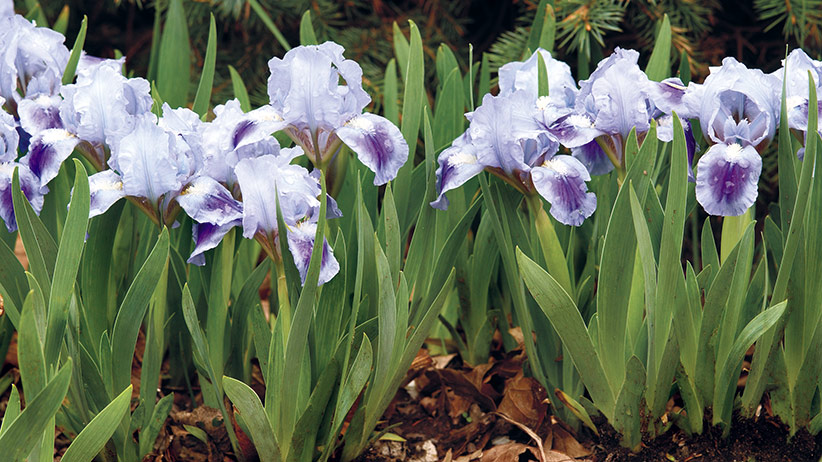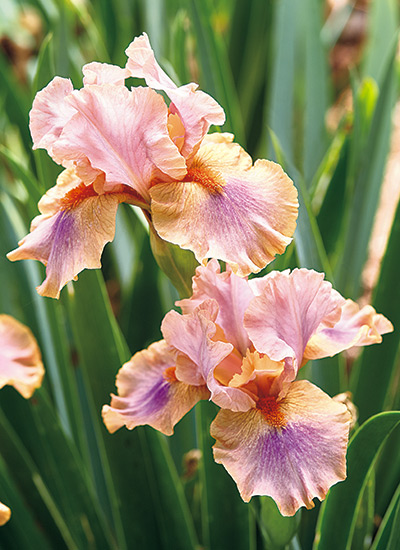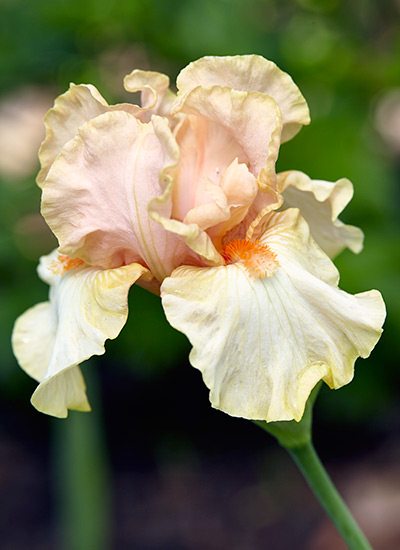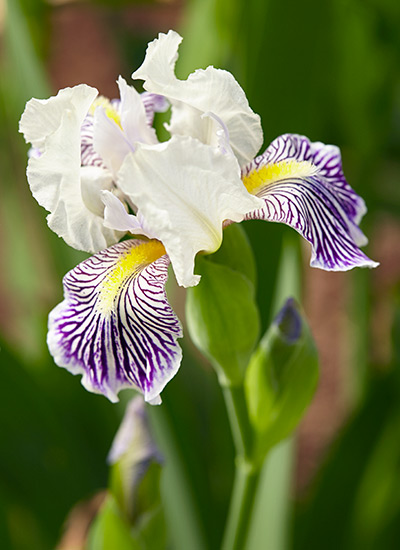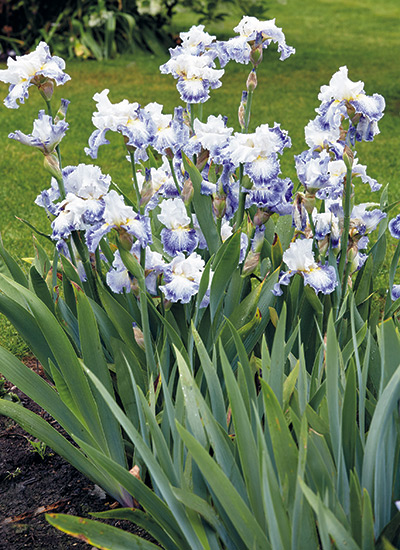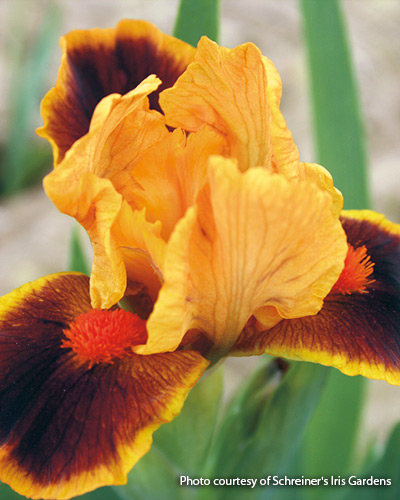How to grow bearded iris
If you want nonstop color for spring, look no further than bearded iris. Though it's easy to grow, there are a few details that will ensure your plants comes back and look gorgeous year after year
Bearded iris do best in full sun for lots of flowers and well-drained soil so the rhizomes don’t rot. For strong plants, fertilize with a low-nitrogen plant food in early spring and again a month after they finish blooming.
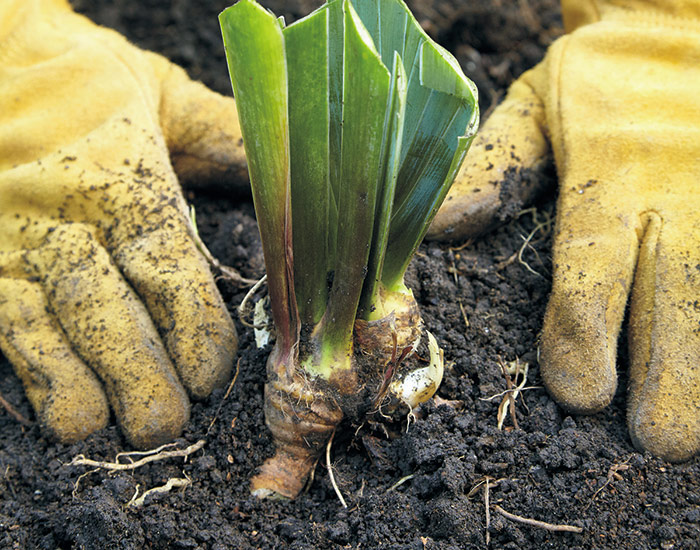
Planting bearded iris rhizomes
Whether you see a pretty potted bearded iris you like at the garden center in spring or buy from a mail-order company that ships the rhizomes to you in summer, the rhizomes should be planted at or just below the surface of the soil to prevent rot. Plant rhizomes 1 to 2 feet apart with the smaller iris types closer together than the larger ones. This allows enough space so you don’t have to divide in a couple of years.
Dig the right size hole
To plant bearded iris dig a shallow hole and use some of the soil to build a small hill in the center. Place a rhizome on top of the hill of soil with the roots spread apart and the rhizome at soil level, then fill in the hole, covering the roots and firming as you go to keep it anchored. It’s OK if some of the rhizome shows above the soil, as it does in the photo above. Give your new plants a thorough watering and then don’t worry about doing so again unless it’s a dry year — up to 1 inch of rain a week is fine for bearded irises.
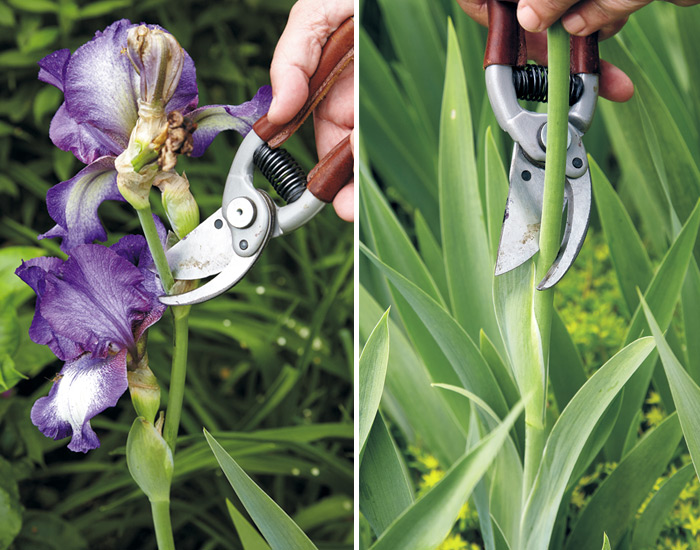
Deadheading bearded iris
Bearded irises start blooming at the top of the stem and move down, with each flower lasting for 2 to 3 days. You can snip off individual spent flowers as they fade if you’d like, but you’ll want to cut the long stem back to the foliage once all the blooms are done to tidy up.
You Might Also Like:
3 Ways to Deadhead Flowers
Must-Have Pruning Tools
Perennial Deadheading Guide
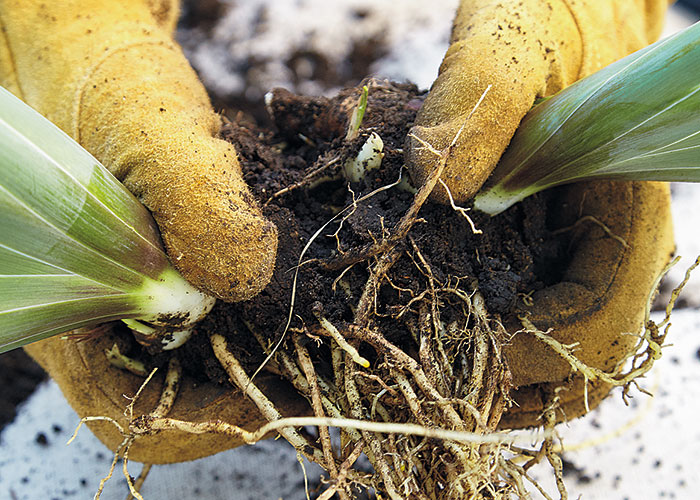
Dividing bearded iris
If you’ve noticed your bearded irises aren’t blooming like they used to, they may need to be divided — every 3 to 5 years on average. Fortunately, it’s easy to do. The best time to divide bearded iris is 6 to 8 weeks after blooming or sometime in summer. Plants are partially dormant this time of year so the growth of roots and foliage has slowed down.
- Dig the clump of rhizomes out of the soil.
- Cut the foliage back to 10 to 12 inches to make handling them easier.
- Break the rhizomes apart into smaller pieces, as I’m doing above.
- Remove the oldest pieces, which don’t have foliage.
- Get rid of any rhizomes that are dried out or rotten.
- Replant the rhizomes in the same way you plant new ones and water well.
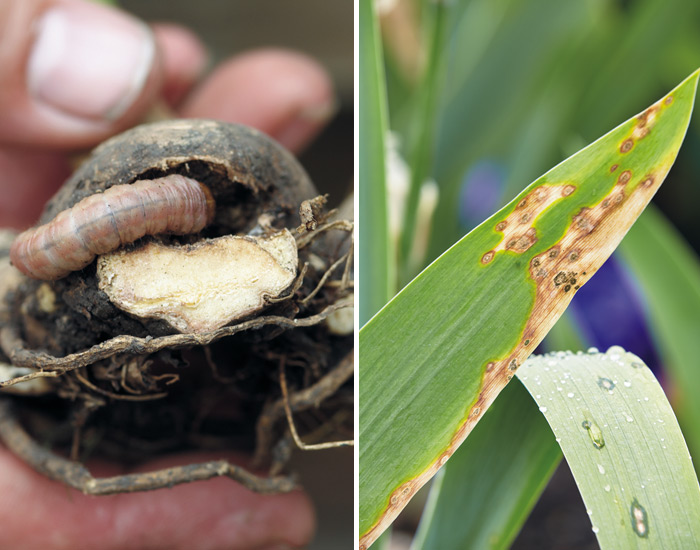
Troubleshooting bearded iris
Bearded irises have few problems, but there are a couple common ones that may crop up: iris borer and leaf spot. They don’t kill your plants right away but weaken them over time until they finally die. One practice that keeps bearded irises healthy is getting rid of the foliage in late fall. Cut leaves back to the rhizome or tug away dried or tired-looking leaves and burn, bury or send them away in the trash, especially if you’ve noticed any problems over the growing season.
You Might Also Like:
Tips for Growing a Fragrant Garden
Spring Flower Combinations
Peony & Iris tour
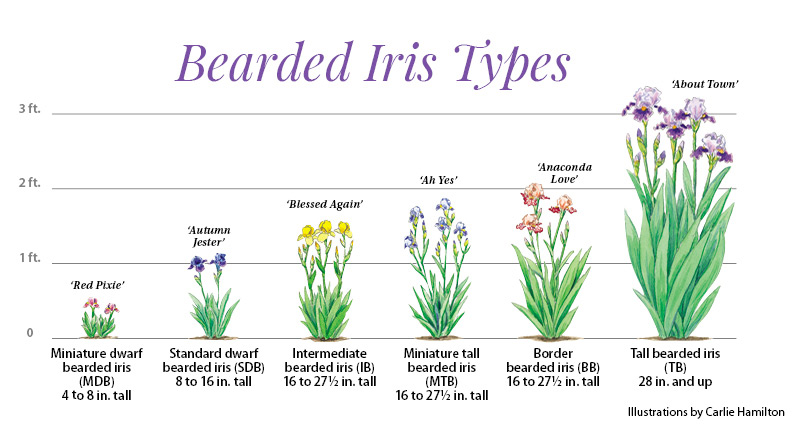
Types of bearded iris
You may be surprised to know that there’s more to bearded irises than the tall varieties. Look over the chart above to see how they're broken into six groups based on bloom time, plant height and flower size. They all have the same care needs so it’s easy to combine them for weeks of beautiful flowers (even months if you include a few rebloomers from each group). In general, the larger the plant, the later in spring it blooms. (When you're browsing catalogs you might see the acronyms listed in parenthesis with each name listed below.)
- Minature dwarf bearded iris (MDB) 4 to 8 in. tall
- Standard dwarf bearded iris (SDB) 8 to 16 in. tall
- Intermediate bearded iris (IB) 16 to 27.5 in. tall
- Minature tall bearded iris (MTB) 16 to 27.5 in. tall
- Border bearded iris (BB) 16 to 27.5 in. tall
- Tall bearded iris (TB) 28 in. and up
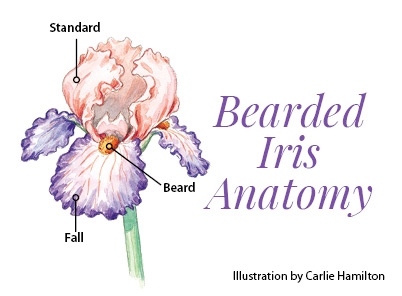
Bearded iris anatomy
Before browsing the gallery below it’s helpful to know a little bearded iris lingo. The illustration shows you the basic parts of an iris flower, fall, standard & beard, so you'll be "in the know" when you read the catalog descriptions.



